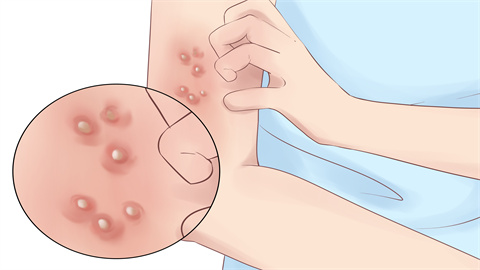How to Determine if It's Scabies
Generally, determining whether it is scabies can be assessed comprehensively from contact history, itching patterns, rash morphology, predilection sites, and symptoms in close contacts. These aspects can help differentiate scabies from other skin conditions. Detailed analysis is as follows:

1. Contact history: If there has been close contact recently with a known scabies patient or use of the patient's personal items such as clothing, bedding, or towels, the probability of infection is higher. Particularly in communal environments such as dormitories or households, if others develop similar skin discomfort, scabies should be considered primarily when symptoms appear.
2. Itching pattern: The itching caused by scabies typically worsens significantly at night. This is because the mites are more active at night, causing increased irritation to the skin's nerve endings, often resulting in frequent scratching during sleep and disturbed sleep. If there is no diurnal variation in itching or if itching worsens after contact with specific substances, scabies is less likely, and other skin conditions should be considered.
3. Rash morphology: Check whether scabies-specific skin lesions are present, such as grayish-white linear burrows between the fingers, wrists, scattered pale red small papules, or vesicles the size of a pinhead. If the rash presents as erythema, large wheals, or exudative crusts without tunnel-like changes, it is more likely to be another skin disease rather than scabies.
4. Predilection sites: Scabies rashes commonly occur in thin, tender, and concealed areas of the skin, such as between the fingers, inner wrists, armpits, groin, male scrotum, and under female breasts. If the rash mainly appears on exposed areas such as the face, back of the hands, or lower legs, is widely scattered over the body, and does not concentrate on tender areas, scabies should be ruled out.
5. Symptoms in close contacts: Because scabies is contagious, if family members, roommates, sexual partners, or other close contacts simultaneously develop similar itching and rashes, especially when multiple individuals have similar symptoms and share a common living environment, scabies is highly likely.
If several of the above scabies characteristics are present in daily life, it is recommended to disinfect clothing and bedding by boiling or sun exposure, and avoid close contact with others to prevent transmission. At the same time, maintain clean and dry skin, minimize scratching to prevent skin damage, and aid subsequent care and recovery.





